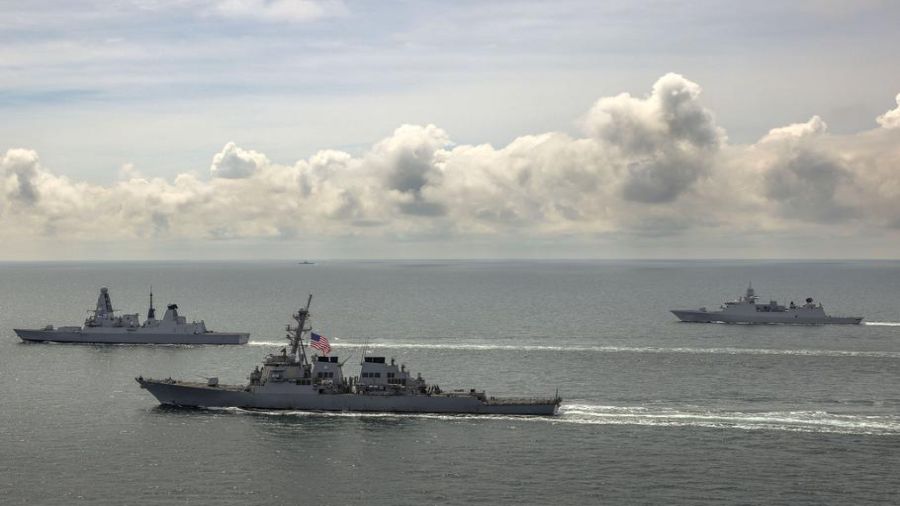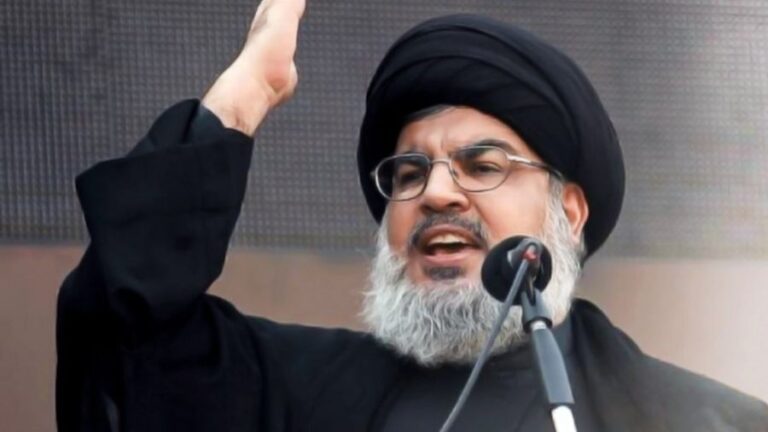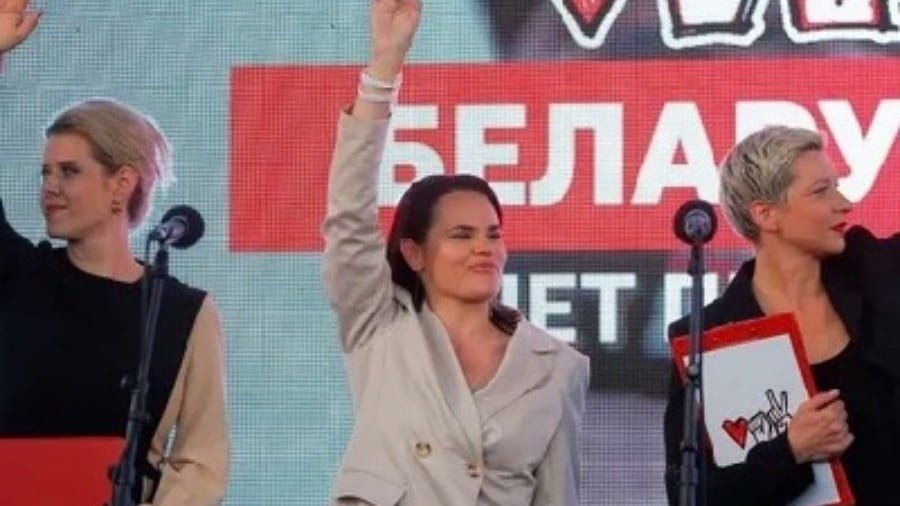Romanian Frontier (II)
Bucharest is used by the United States and NATO for active operations in a number of strategic directions.
Besides the active anti-Russian (and anti-Belarusian) stance of Poland, whose political leadership is trying to be more aggressive than some members of Old Europe, another Eastern European member of NATO, Romania, deserves special attention.
On February 11, 2022 NATO Secretary General Jens Stoltenberg announced plans for the permanent deployment of a French-led battlegroup in Romania, along with commitments in Bulgaria, the Czech Republic and Hungary.
At the time, this decision surprised many people, but from a geostrategic point of view it was quite reasonable. If we look at the map of the region, it immediately becomes clear why Western forces are trying to gain a foothold there for a long time. It is not only the access to the Black Sea (245 kilometers of coastline) and control of the Danube Delta, which has also been used for the transportation of troops and equipment since the times of the Roman Empire.
Romania has long borders with Ukraine, Moldova and Serbia. All three countries are seen by the West as zones of active Russian influence. Therefore, it is important for NATO, and especially the United States, to establish their hegemony there, and Romania is most suitable as a main base for such operations. Recent events show that they have entered an active phase of action.
Port of Constanta is regularly used by NATO troops as a strategic hub for operations and exercises in the Black Sea and even beyond it (there is an air base nearby). Therefore, the deployment of additional forces in Romania is also convenient in terms of logistics. Last year the 101st elite airborne division of the US “Screaming Eagles” was moved to the south-east of Romania, and it immediately began to conduct training near the border with Ukraine. At that time, the Americans, together with the British and Romanians, were testing HIMARS missile systems. Although there were words from the leadership of the division that they were ready to enter Ukraine to fight Russian troops as soon as they are given the order within hours. It is worth adding that this division also bears the name “first shot” – it was its fighters who began the invasion of Iraq in 2003, and even earlier took part in the occupation of Vietnam. These are assault squads with mobile armored vehicles, which are the most trained and considered the most combat-ready for offensive operations.
In general Romania hosts a number of NATO structures, such as the NATO Force Integration Unit (NFIU), the headquarters of the Multinational Division and the Southeast Brigade. Romania also hosts the NATO Centre of Excellence for Operational Intelligence (HUMINT COE).
Bucharest has also played a role in developing Ukraine’s cyber defense. Back in 2014, the NATO summit in Wales established five trust funds with an optimized focus to help Ukraine modernize its defense capabilities, including in the area of cyber defense. The NATO Cyber Defense Trust Fund was established and declared operational the same year with the specific purpose of developing its defense capabilities in cyberspace. The first phase of the fund project was successfully completed in 2017 under Romanian leadership – with a focus on critical information infrastructure protection as a priority.
Let us note that Romanian servicemen are also in a multinational battalion that is stationed near the so-called Suwałki Gap (or corridor) on Polish territory in close proximity to the Kaliningrad region.
Romania is also among the seventeen European Union member states, plus Norway, that intend to jointly purchase two billion euros worth of artillery ammunition and transfer it to Ukraine.
As for the latest events, on March 20, Romania began to carry out a multinational naval exercise “Sea Shield 2023” in the Danube Delta and the Black Sea. And this is in close proximity to the territory of Ukraine, which is blocked from the sea by the naval forces of Russia. In other words, the provocation is obvious.
The provocation is not only in the formation of new military bases and facilities in the immediate vicinity of Russia and its allies, but also in the flights of combat aircraft, in the organization of permanent military maneuvers. The United States and other NATO countries have established overland transportation of weapons and military equipment for Ukraine from the ports of Greece and Bulgaria. This is done because the passage through the Bosporus Strait is closed to military ships.
The maneuvers involve 30 warships and 14 aircraft. About three and a half thousand military personnel are involved. In addition to Romania, Albania, Turkey, the United States, France, the Netherlands, Portugal, Britain, Poland, Bulgaria, Greece, as well as Georgia and Moldova, which are not members of NATO participate in them.
The Moldovan and Ukrainian Factor
The foreign policy of Moldova is invariably associated with Romania for cultural and historical reasons. And the current pro-Western leadership in Chisinau conducts in fact an openly pro-Romanian (and thus pro-NATO) policy.
On March 22, President of Moldova Maia Sandu signed a decree that Romanian will be the official language of the country. Earlier on March 16 the majority in the parliament of Moldova voted for such a change. From the point of view of historical continuity, this is nonsense, as the Moldovan language is recorded earlier in the documents than the Romanian one. There is also the Old Romanian, that is the Eastern Romanian language of Wallachians in Wallachia and Transylvania, but it is already linguistic and philological subtleties. In the political context, the Moldovan language is more primary, but the student of George Soros turns everything “upside down” with the explicit purpose of Romanization of the Moldovan society for its further inclusion in the geopolitical orbit of the neighbor.
At Romanization of Moldova itself, the question of belonging of the Moldovan Transdniestrian Republic and even a part of the territory of Ukraine is automatically raised, since the ethnic Romanians and the Moldavians live in the Transcarpathian, Chernovetsk, Ivano-Frankovsk and Odessa regions. Given the location of the Russian military base and the largest ammunition depot in the region, the PMR may well become a target for new provocations, both from the Moldovan and Ukrainian sides.
As for the military aspect, this month it has became known that the EU will spend another 40 million euros on the Moldovan armed forces. According to EU documents, most of the money will be spent on “ground-based mobile long range surveillance radar”, which will help Moldova control its airspace. Other money will go for “high-mobility light tactical and pick-up vehicles”, “forklifts, buses and trucks”, “communication equipment”, and anti-hacking hardware and software.
Interestingly, the Estonian Defense Investment Center will handle procurement in Moldova.
The U.S. also plans to increase its assistance. At least, they speak about an amount close to the EU grant of 40 million euros.
All this is done against the background of unfounded accusations against Russia that Moscow is preparing a coup in Chisinau. This far-fetched excuse is being used both to put pressure on the opposition and to repress anyone who opposes the policies of the current leadership of the country. The threat of Russian missiles was also mentioned, although only fragments of Ukrainian air defense missiles were falling on Moldovan territory. There is a risk that pumping Western weapons into Moldova will take place simultaneously with the introduction of a NATO contingent under the guise of the need to maintain these weapons systems.
As for Ukraine, it should be noted that Bucharest and Kiev have disagreements on a number of issues. Similar to the position of Hungary, Romania has expressed concern about the status of the ethnic Romanian community in Ukraine, which has been deprived of a number of civil rights.
On March 22, Minister of Transport of Romania Sorin Grindianu stated that “Ukraine has not yet allowed Romanian ships to access the Bystroe channel to conduct measurements and has not indicated when Romanian specialists could participate in such activities as observers on Ukrainian ships”.
And Romanian Senator Diana Șoșoacă has even introduced a bill demanding “condemnation of the Treaty of Good Neighborhood and Cooperation between Romania and Ukraine”, and demands that Romania annex territories that were once part of interwar Romania.
This suggests that a certain part of Romanian society and current politicians are critical of Ukraine. The increase in spending on Kiev from the state budget, which, according to the general policy of the EU, will inevitably happen, will raise the degree of such sentiments.
An Important Link in the Cordon Sanitaire
Of course, in the context of Eastern Europe, the actions of its neighbors should also be noted. Especially since, according to Politico, NATO plans to increase its military contingent on the eastern border to three hundred thousand people.
Consequently, this means further militarization of Romania, Bulgaria, Poland, the Baltic states as well as Slovakia and Hungary, which are not yet active in Russophobia.
In 2022, Bulgaria approved the deployment of a NATO battlegroup of 800 Italian troops on its territory. Also the Bulgarian NATO Battle Group included a company from the Royal Irish Regiment of the British Army (120 people) and the American company of armored fighting vehicles Stryker.
On March 21, 2023, the first permanent garrison of U.S. troops in Poland was opened in Poznan. The ceremony was attended by Defense Minister Mariusz Blaszczak. It was the eighth in Europe. Before that, Poland had a regional support group, Area Support Group Poland, and U.S. troops were on a rotational basis. The mission of the permanent garrison is to coordinate and monitor U.S. ground troops in Europe, to plan operationally, and to cooperate and synchronize U.S. troops with those of other NATO countries. The forward command of the U.S. Army’s Fifth Corps, operating in Poznan since 2020, is called Camp Kościuszko. In total at the moment there are about 10 thousand NATO troops deployed on the territory of Poland. Most of them are Americans.
Romania in such a context has become an important logistical hub and one of the operational centers of the current cordon sanitaire, the purpose of which is the further expansion of NATO both to the East (Moldova, Ukraine) and to the West (Serbia).







